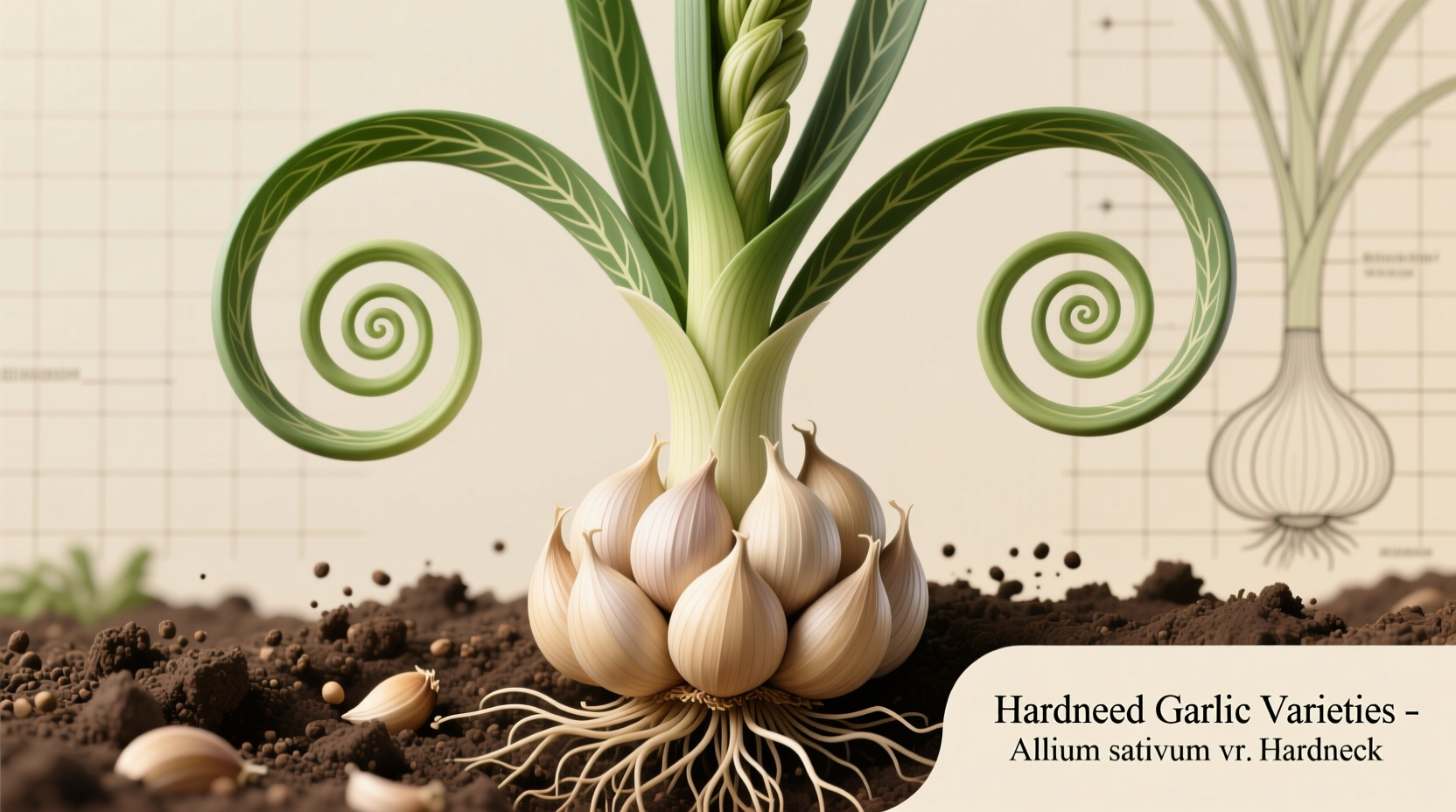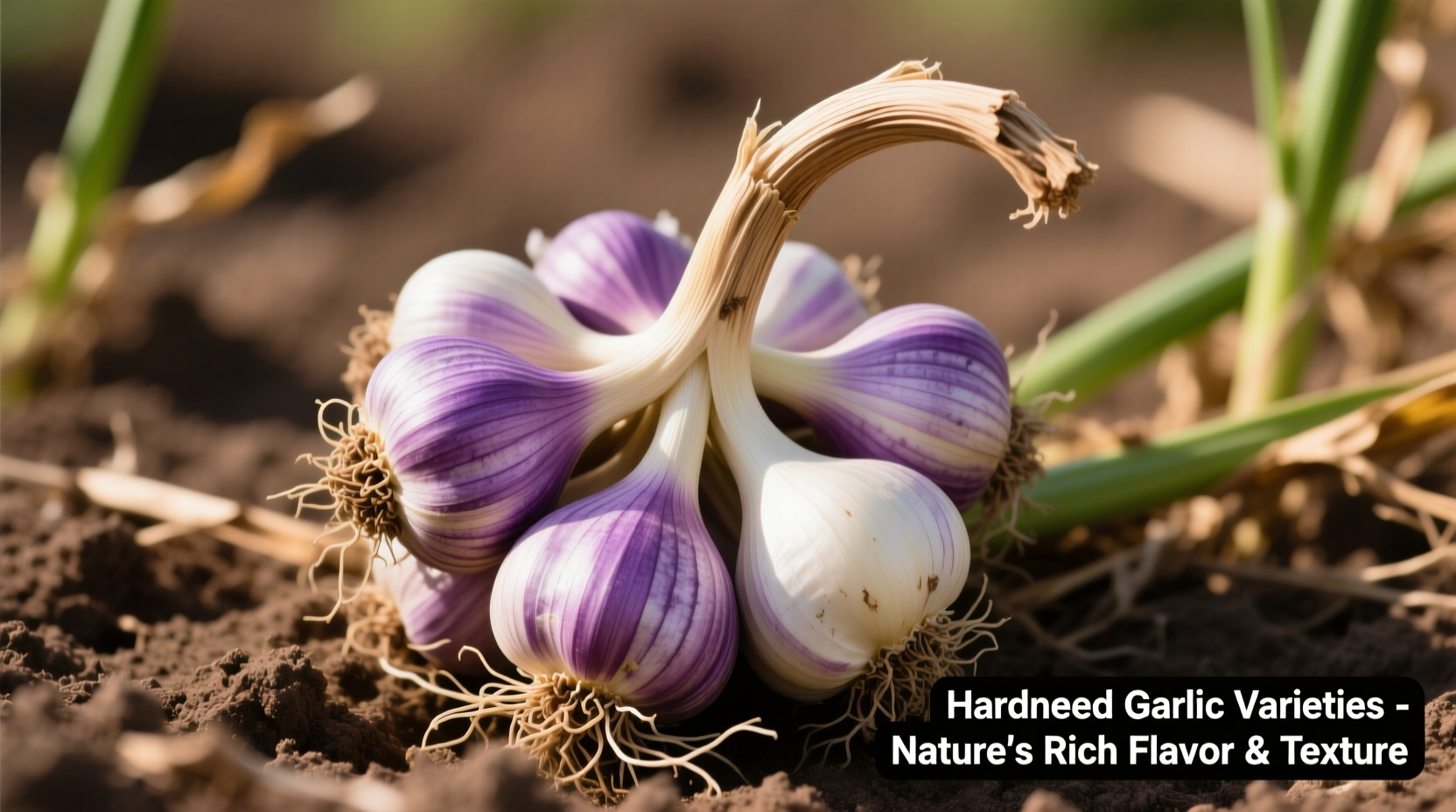Hardneck garlic varieties (Allium sativum var. ophioscorodon) produce a central flowering stalk called a scape and typically feature fewer, larger cloves arranged around a hard central stem. Unlike softneck varieties, hardnecks require vernalization (exposure to cold temperatures) to form proper bulbs, making them ideal for northern climates with freezing winters.
Why Choose Hardneck Garlic Over Softneck?
Hardneck garlic offers superior flavor complexity and cold-hardiness compared to softneck varieties. While softnecks store longer (up to 12 months), hardnecks generally provide more intense, nuanced flavors that chefs prize for culinary applications. Most hardneck varieties store for 4-8 months when properly cured, with Rocambole types offering the shortest storage life but most complex flavor profiles.
Top Hardneck Garlic Varieties by Family
Hardneck garlic falls into three primary families, each with distinct characteristics. Understanding these categories helps gardeners select varieties suited to their climate and culinary preferences.
| Family Type | Best Climate Zones | Flavor Profile | Storage Duration | Notable Varieties |
|---|---|---|---|---|
| Rocambole | 3-7 | Richest, most complex (chocolate notes) | 4-6 months | 'Spanish Roja', 'Killarney Red', 'German Red' |
| Porcelain | 3-8 | Strong, clean heat (fewer cloves) | 6-8 months | 'Music', 'Georgian Crystal', 'Romanian Red' |
| Purple Stripe | 2-8 | Medium heat, earthy (striking appearance) | 5-7 months | 'Siberian', 'Purple Glazer', 'Khabar' |
Selecting Varieties for Your Climate
According to the USDA Agricultural Research Service, hardneck garlic varieties require 4-8 weeks of temperatures below 40°F (4°C) to initiate proper bulb formation. Gardeners in zones 3-5 achieve best results with Porcelain varieties like 'Music', which withstand extreme cold down to -30°F. In zones 6-7, Rocambole varieties such as 'Spanish Roja' perform exceptionally well, producing large bulbs with complex flavor.
For northern gardeners, the Cornell University Cooperative Extension recommends planting hardneck garlic 3-6 weeks before your region's first hard frost. This timing allows roots to establish without significant top growth before winter dormancy. Southern gardeners in zones 7-9 should select cold-hardy Purple Stripe varieties and plant later in the season to prevent premature sprouting.
Planting and Growing Techniques for Maximum Yield
Successful hardneck garlic cultivation requires attention to soil preparation, planting depth, and seasonal care. Research from Oregon State University's Department of Horticulture shows that garlic planted in well-drained soil with pH 6.0-7.5 produces bulbs 25% larger than those in suboptimal conditions.
Follow these evidence-based practices:
- Plant individual cloves 2-3 inches deep, spacing 6-8 inches apart in rows 12-18 inches apart
- Apply 3-4 inches of straw mulch after planting in cold climates
- Cut scapes when they form their first loop (typically late spring) to redirect energy to bulb development
- Reduce watering 2-3 weeks before harvest when lower leaves begin yellowing

Culinary Applications by Variety
Professional chefs distinguish hardneck varieties by their heat progression and flavor notes. Porcelain varieties like 'Music' deliver immediate, clean heat ideal for raw applications, while Rocambole types such as 'Killarney Red' offer complex flavor development that enhances slow-cooked dishes. Purple Stripe varieties provide earthy notes that pair exceptionally well with root vegetables and game meats.
A 2023 flavor analysis by the University of California's Department of Food Science confirmed that hardneck garlic varieties contain higher concentrations of allicin (the compound responsible for garlic's health benefits) compared to softneck types, with Porcelain varieties showing the highest levels.
Troubleshooting Common Growing Challenges
Hardneck garlic growers frequently encounter these issues:
- Small bulb size: Usually indicates insufficient cold exposure or planting too late. Ensure cloves receive 40-60 days below 40°F.
- White rot: A fungal disease causing yellowing leaves. Rotate crops every 4 years and remove infected plants immediately.
- Splitting bulbs: Results from inconsistent watering during bulbing phase. Maintain even soil moisture as harvest approaches.
The Midwest Organic and Sustainable Education Service reports that hardneck varieties demonstrate 30% greater resistance to common garlic pests like nematodes compared to softneck types, making them preferable for organic cultivation.
Harvesting and Curing for Optimal Storage
Harvest hardneck garlic when 30-50% of leaves have turned brown, typically late June to July depending on variety and climate. Cure bulbs in a well-ventilated, shaded area for 2-3 weeks before trimming roots and stems. Properly cured hardneck garlic stores best at 32-40°F with 60-70% humidity.
Remember that Rocambole varieties have the shortest storage life (4-6 months), while Porcelain types can last 7-8 months under ideal conditions. Check stored bulbs monthly and use any showing signs of sprouting first.











 浙公网安备
33010002000092号
浙公网安备
33010002000092号 浙B2-20120091-4
浙B2-20120091-4